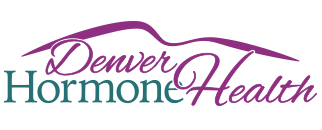Toxic Chemicals That We Are Exposed To Everyday: Part 2
A few weeks ago we took a look at toxic chemicals that are found in our environment, the food we eat, and everyday consumer products. The bad news is that as long as you breath, eat, and drink you are exposed to these substances. However, it is not all gloom and doom, as there are many steps that you can take today to decrease your risk of exposure. The first step is to understand what are the most common toxic substances, and where they are found (which is what was covered in last weeks blog).
Why is this important?
Well, lets say that you are trying to be health conscious, and during your next trip to the supermarket you purchase fruits and vegetables that you plan to consume on a regular basis. However, you are unaware of the difference between organic and non-organic foods and purchase all non-organic. In this case your intentions are good, however you would be inadvertently consuming copious amounts of organophosphates. The result of which would do more harm than good. This is why being informed is the first step.
The next step is to take action, and make informed choices, so the next time you go to supermarket you seek out the appropriate organic fruits and vegetables. However, maybe your like many Americans and have “sticker shock” when you see the organic price tag. Well don’t despair, because the Environmental Working Group (EWG) has a great list of fruits and vegetables that are high (The Dirty Dozen) and low (The Clean Fifteen) in chemicals like organophosphates, so you don’t have to purchase all organic.
A few other tips to incorporate in you diet are:
- Eat free-range poultry with no antibiotics, synthetic hormones or preservatives.
- Eat grass-fed meats vs corn-fed meats raised with no antibiotics, synthetic hormones or preservatives.
- Purchase organic, grass-fed dairy products.
- Consume wild caught fish versus farm raised. Farm raised fish contain high amounts of chemicals such as PCB”s that can stay in the body for decades.
- Eat vegetables from the coniferous family such as broccoli, cauliflower, bok choy, kale, and brussel sprouts.
- Eat leafy green vegetables to obtain more chlorophyll, or take a chlorela supplement. These products bind harmful substances in the body.
- Take a probiotic which can help maintain a healthy digestive tract.
- Eat lots of fiber.
- Consume foods that are high in antioxidants such as green tea and blueberries.
However, it does not end at the grocery store for there are many changes you can make in your own home.
For starters, the air in our homes can be more toxic than the air outside. This is largely due to the household cleaners, poor air circulation, and chemicals found in home furnishings. One group of chemicals that are ubiquitous to household products are organochlorines. They can be found in degreasers, bleach, detergents, and pesticides.
Here are some suggestions on purifying and cleaning your household:
- Purchase an air purifier
- Remove carpet
- Buy furnishings that are made with real wood vs pressed wood
- Buy non-VOC (volatile organic chemicals) paint
- Use natural/organic cleaners
- Don’t use pesticides
Plastics are another common product in homes across America and can contain chemicals such as Bisphenol A (BPA) and Phthalates.
To protect yourself from these chemicals:
- Replace plastic utensils, dishes, and cups with glass and stainless steel.
- Avoid cling wrap and plastic baggies, and plastic containers such as Tupperware for storing food and use storage containers manufactured of ceramic or glass materials instead.
- Never heat your food in plastic. Use glassware or ceramic containers as an alternative.
- Stainless steel or glass water bottles are a great alternative to plastic.
Bath and beauty products, cosmetics, lotions, shampoos, deodorants, and soap (even anti bacterial soap) also contain synthetic chemicals that are absorbed through the skin and disrupt the endocrine system
Many women’s cosmetics contain parabens and phthalates. The best advice is to stay away from using products with many of these harmful substances; “if you can’t eat it, don’t buy it.” Now that may be a bit extreme, but the general idea is to look for organic, all natural products. If you do insist on using products with these harmful substances, do your best to use them sparingly.
Other steps you can take to limit your toxic burden are:
Drink filtered H2O- One example of a quality filter is Free Drinking Water.com
Exercise and sleep – both are important to detoxification and help eliminate the accumulation of endocrine disruptors in the body.
By taking several of the steps listed in this blog you can decrease your toxic load by up to 85%. For more information on this topic and many other wellness tips contact Vitali-T Medical Clinics to see how we can help you achieve optimal health and wellness.
